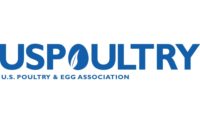USPOULTRY accepting board research initiative pre-proposals on reduced hatchability in broiler breeders
Poultry industry currently experiencing reduced hatchability in all broiler breeder lines.

USPOULTRY and the USPOULTRY Foundation are accepting research pre-proposals from colleges, universities, and research facilities through Nov. 1, addressing reduced hatchability in broiler breeders. Over the last several decades, the use of genetic selection by poultry genetic companies has allowed for the development of superior genetics capable of high efficiency broiler and breeder production. In addition, advancements in nutritional and management practices have further enhanced these results. Although continuous improvements in broiler production traits, such as feed conversion, average daily gain, and breast meat yield have been observed over the course of time, key broiler breeder production traits—for instance, hatchability—have recently faltered in the process. The poultry industry depends on a regular supply of day-old chicks, and this supply is dependent on the fertility and hatchability of eggs. For the last several years, the poultry industry has experienced reduced hatchability in all broiler breeder lines, causing the industry a short supply of chicks and creating chicken meat shortages. While the reason of this decline is unclear, further research is needed to determine and identify the cause of reduced hatchability in broiler breeders and develop preventative best strategies in the future.
The research areas of focus should be on evaluating nutritional strategies that improve sperm quality and identifying management practices to enhance male performance; identifying the relationship between sperm storage and mating frequency and determining the optimal rate required for maintaining hatchability; evaluating the impact that hen feathering has on the life of flock fertility and identifying management and nutritional strategies to improve feather quality; determining the impact of various egg collection methods, including automated egg collection on hatchability; and quantifying the impact of farm cracks on hatchability and developing on-farm procedures to reduce observed incidences.
The research should also answer the following questions: Is the reduction in hatchability due to the decline in male traits, such as libido and sperm quality/quantity, or is it associated with the hen (e.g., sperm storage, mating interactions etc.)?; What is the primary reason for the reduction in hatchability (e.g., genetic, management, nutrition etc.), and what strategies can be implemented to alleviate the issue?; What is the best nutritional strategy to feed males?; and What role does male fleshing have toward the life of flock fertility?
Visit the USPOULTRY website for complete instructions to submit a pre-proposal.
Looking for a reprint of this article?
From high-res PDFs to custom plaques, order your copy today!







